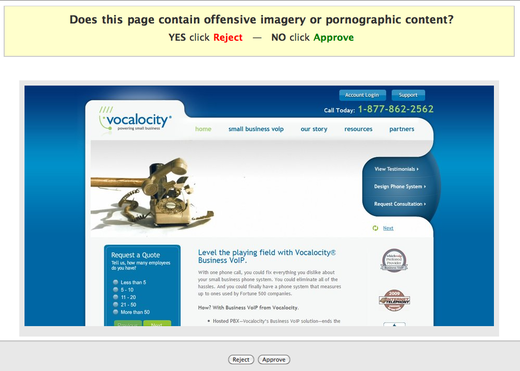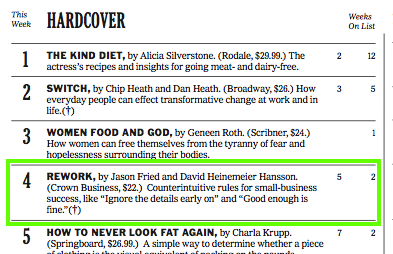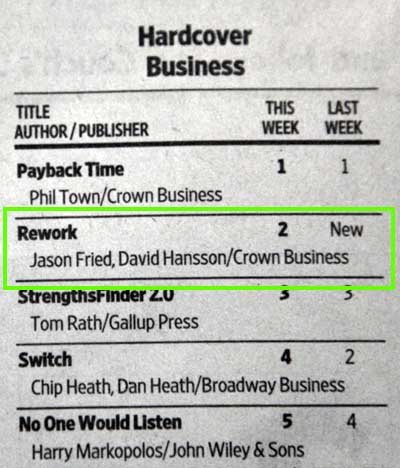Yesterday, during an interview with Andrew Warner at Mixergy, I spoke about my early work experience bagging groceries, selling shoes, pumping gas, etc. There’s nothing particularly unique about these jobs – they are common jobs. But they taught me some important lessons about people, how they decide what to buy, and what really matters to them.
Selling shoes (and tennis rackets) twenty years ago reminded me of selling software today. The shoe world and tennis racket world are very much like the software world. Manufactures pitch features and technological advantages but customers judge the products in an entirely different way.
When I worked at this golf and tennis pro shop selling shoes and rackets, brand reps would come by and tell the staff about the latest products. They’d explain the new EVA midsole in this shoe, and the Goodyear rubber outsole in that shoe. They’d talk about flex grooves, heel notches, cushioning systems, etc. They’d talk about graphite frames, widebody rackets, sweetspots, etc. On paper these were strong selling points, but in the store very few people cared.
Here’s how most people found a shoe and decided if it was right for them. They’d walk up to the pegboard wall where the shoes were lined up. They’d pick up a few, spin ‘em around, and put them back. Then they’d hone in on one of them because they liked the way it looked. They’d ask for their size, I’d bring it out, and they’d try it on. They’d jam their thumb between their big toe and the tip of the shoe to see if it fit. Then they’d maybe bounce around a bit or “hard walk” to see how the cushioning felt. Then they’d look in the mirror to see how it looked. They’d they’d buy it or repeat the process with another shoe.
The technology didn’t matter. The number of flex grooves didn’t matter. The chemical composition of the insole, midsole, and outsole didn’t matter. What mattered were the absolute basics: Do I like the way it looks, does it fit, and is it comfortable. Sold. All the other things that we were told about the shoe could never represent themselves in a 3 minute try-on anyway. Sole durability didn’t matter now. All the soles were equally durable during a 3 minute walk around on a carpeted store floor. Any talk about a midsole went right over their head. All they knew was “this felt good” or “this is too narrow” or “this rubs my big toe” or “ooh, this is comfortable.” I could explain this stuff all day long, but their realization always trumped my explanation.
This isn’t to say that some people didn’t take the features and technology seriously, but it is to say most – nearly all – didn’t. They didn’t care about the same things the manufacturer cared about. And they certainly didn’t see the world the same way the brand rep saw the world. The customer wanted the simple things done well. Their evaluation consisted of a few key things: look, fit, and comfort. And that’s it.
The same thing was true for tennis rackets. We were armed with every last fact about every last racket, but here’s how people picked a racket: 1. Their friend or tennis pro told them to buy it, or 2. They picked it up, did a few fake swings, bounced their hand off the strings, pictured themselves holding it on the court, and either bought it or repeated the same test with another racket. Often times they’d ask if it came in another color. No one asked about the size of the sweetspot, and very few cared about fiberglass vs. graphite. Some did, most didn’t. They cared about how it looked, how it felt, how much it weighed, and if their friends would approve. I could move people to this racket or that racket with some fancy facts, but most people made up their own mind based on a set of pre-determined criteria that had more to do with their own preferences than the brand’s preferences.
I saw the same thing when I worked at the grocery store. From the types of labels people read to the number of bags they wanted to take home. People would opt for clarity, comfort, and convenience. Yeah, spreading out groceries across 3 bags may have technically been better, but that meant they’d have to make another trip to their car when bringing their groceries in their house. They wanted simple. One trip, done.
It all reminds me of the software business. The industry is obsessed with touting features while the public is obsessed an entirely different set of criteria: Does it solve my basic problems and is it easy to use? Does it make sense? Do I understand it?
The real lesson for me is this: People want the basics done well. Does it look good, does it feel good, is it comfortable, is it clear, is it easy? No matter what you’re selling, those seem to be the things that really matter. Get those right and you’ve got a great shot at building a successful product and business.






